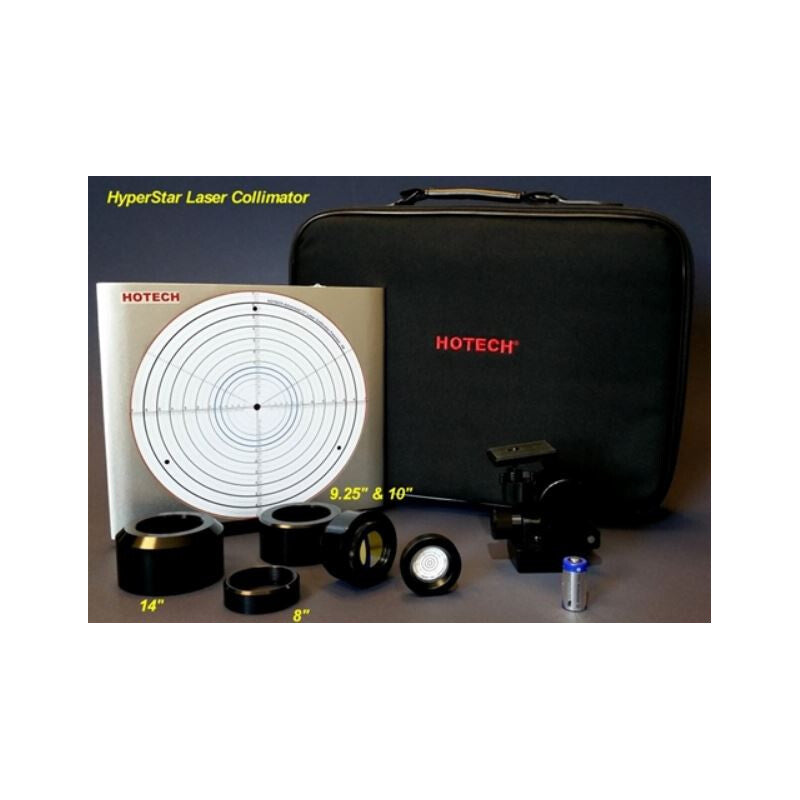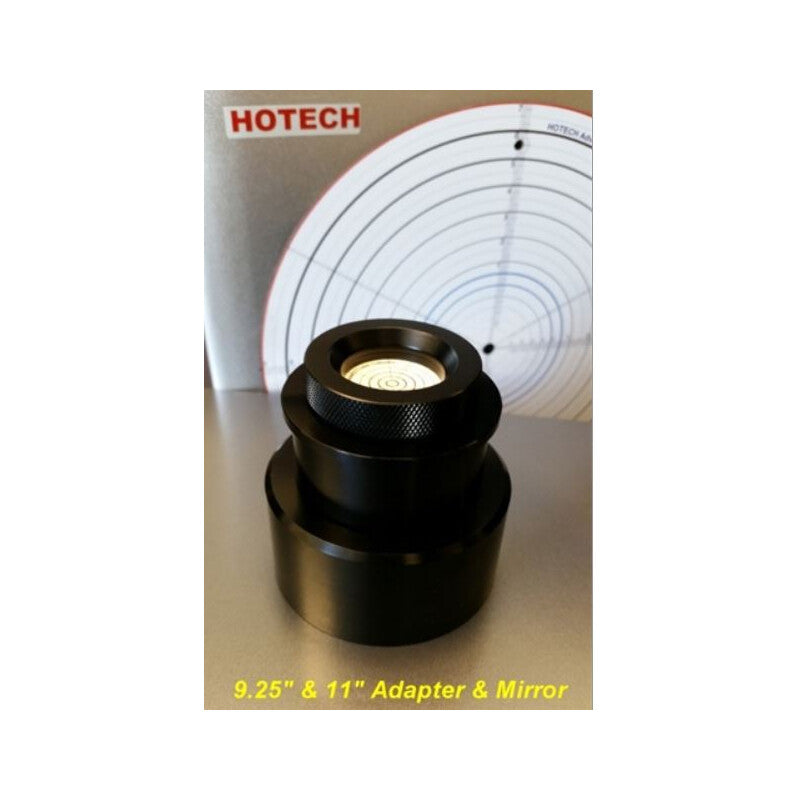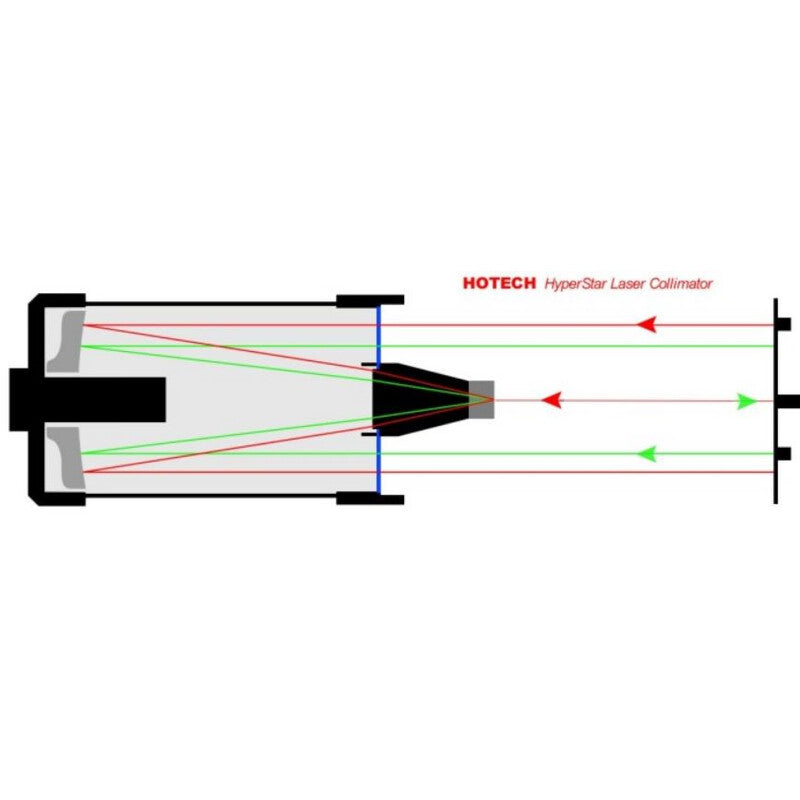Description
What is a HyperStar and how does it work?
HyperStar is a multi-lens correction system used in place of the normal secondary mirror on the Schmidt corrector plate in SC telescopes. The correction of coma and field convexity errors of the primary mirror, which are normally corrected by the secondary mirror, is in this case achieved by the HyperStar optics, studied with the best IT tools in the optical field. The CCD or DSLR camera is placed in front of this lens.
Result:
Your standard Celestron SC telescope becomes a digital Schmidt system for your CCD or DSLR camera for primary focus photography with f/2 (C8, C11) and f/1.9 (C14) .
Only in this way can the legendary performance of Schmidt cameras be further improved by adding the degree of efficiency of a CCD or digital camera. No other combination will give the same result. With the Schmidt digital camera it will be possible to carry out checks of large portions of the sky, mapping, observations of comets but also normal Deep Sky photography with greater efficiency.
With 30 seconds of exposure you will get the same brightness that you get after 12 minutes at f/10. Exposure times are therefore reduced by approximately 25 times. The inconveniences linked to turbulence and tracking errors will no longer arise.
The image definition will be better. Furthermore, it will no longer be necessary to necessarily use an equatorial mount. With only 30 seconds of exposure, the effect of the earth's rotation, which makes it impossible to use azimuth mounts with long exposure times, is no longer a problem. You can take several shots in a series and later process the images to obtain exceptional Deep Sky photographs without having to spend a lot of money.
We offer you the HyperStar set for C8, C925, C11 and C14 optics.
Assembly:
For the aforementioned SC telescopes in theirs NORMAL setup we offer mounting sets (Articles No. 16371, 16372, 16373), capable of making telescopes HyperStar compatible .
DIRECTLY transformable are the aforementioned telescopes in the setup Celestron FastStar . In these cases, simply unscrew the secondary mirror and screw on the HyperStar optics with an adapter ring.
Some advantages in summary of the HyperStar optics:
- Transform your "old" Celestron SC telescope into a digital Schmidt camera (while still maintaining the ability to use it as an SC optics)
- No problems with moving the primary mirror
- It allows a drastic reduction in exposure times
- Extremely simplified tracking, so it is possible to take high quality astrophotography even with azimuth mounts
- Precise polar alignment is not necessary for moving use, since thanks to the extremely short exposure times the declination drift does not generate disturbances
- Brightness and field of view facilitate astrophotography with narrow-band linear filters (filters and quick-connect devices in preparation, updated July 2009)
- DSLR cameras work best at f/2 because they prefer fast aperture ratios.
- It is understood that new generations of Celestron SC HDDs are fully compatible with HyperStar
HyperStar FAQ:
Question: How does focusing occur when photographing with the HyperStar lens?
Answer: Completely normally through the main mirror, as in the standard version.
Question: Can I make visual observations through the FastStar optics?
Answer: No, since the observer's head is IN FRONT of the Schmidt plate. The obstruction would be enormous.
Question: Can moving the main mirror disturb the focus?
Answer: Since the secondary mirror is removed, the 5x magnification of an f/10 SC system is lost. This means that even moving the mirror around 5x has less effect. Moving the mirror is therefore no longer a problem.
Question: Are the images of good quality?
Answer: The quality is comparable to that of an RC astrophotography system, the resolution is already suitable for semi-professional cameras such as the ST-10 SBIG. The stars are noticeably more defined than with f/10.
Question: Does camera obstruction bother me?
Answer: Obstruction when taking photographs is not as critical a factor as when making visual observations. For example, almost all professional mirror telescopes of several meters in diameter have a larger obstruction than a SC with HyperStar and DSLR.
Question: What happens with collimation if using HyperStar optics?
Answer: The HyperStar scope only collimates once upon first use. Returning from the HyperStar to the standard version it is not necessary to carry out a new collimation, because the secondary mirror is unscrewed and screwed back in as an independent collimated unit.
Question: Does using a HyperStar lens have any negative implications?
Answer: Yes, on clear, moonless nights you will no longer want to stay in bed.
Hyperstar optics are the easiest and fastest way to take Deep Sky photographs. No polar alignment, no equatorial mount, no tracking. The HyperStar turns any SC Celestron 8"/11"/14" telescope into an ultra-fast Schmidt digital camera. Deep Sky shots will only take seconds and no more than hours - astrophotography has never been easier!
Payment and security
Your payment information is processed securely. We do not store credit card details nor have access to your credit card information.








